This blog post provides an in-depth exploration of omnichannel capabilities, offering insights into their key features, the benefits they bring, and the best practices for implementation. Throughout the post, you will gain a comprehensive understanding of how these capabilities can streamline operations, improve customer experiences, and drive business growth. Whether you’re just beginning to explore omnichannel capabilities or looking to refine your existing strategies, this guide will serve as a valuable resource for maximizing your omnichannel potential.
Table of Contents
Understanding Omnichannel Capabilities
What is Omnichannel?
The term omnichannel capabilities refers to a business strategy that integrates various customer interaction points across multiple platforms into a seamless and unified experience. These capabilities enable businesses to provide a consistent brand message, personalized service, and effortless transitions between online and offline channels, ensuring that customers can interact with a brand in the way that best suits them. To fully understand the importance of omnichannel capabilities, it’s essential to explore how they differ from multichannel strategies, the core concept behind omnichannel, and how they address customer experience fragmentation.
Omnichannel vs. Multi-channel
Many businesses are familiar with the idea of multichannel strategies, but the distinction between multichannel and omnichannel capabilities is significant. A multichannel approach allows customers to interact with a brand through various individual channels, such as a website, physical store, social media, and email. However, these channels often operate independently, which can lead to disconnected experiences. For example, a customer might receive a promotion in-store that isn’t reflected online, or they may have to repeat their information when switching from a phone conversation to an email inquiry. The lack of cohesion between channels can create frustration and diminish the overall customer experience.
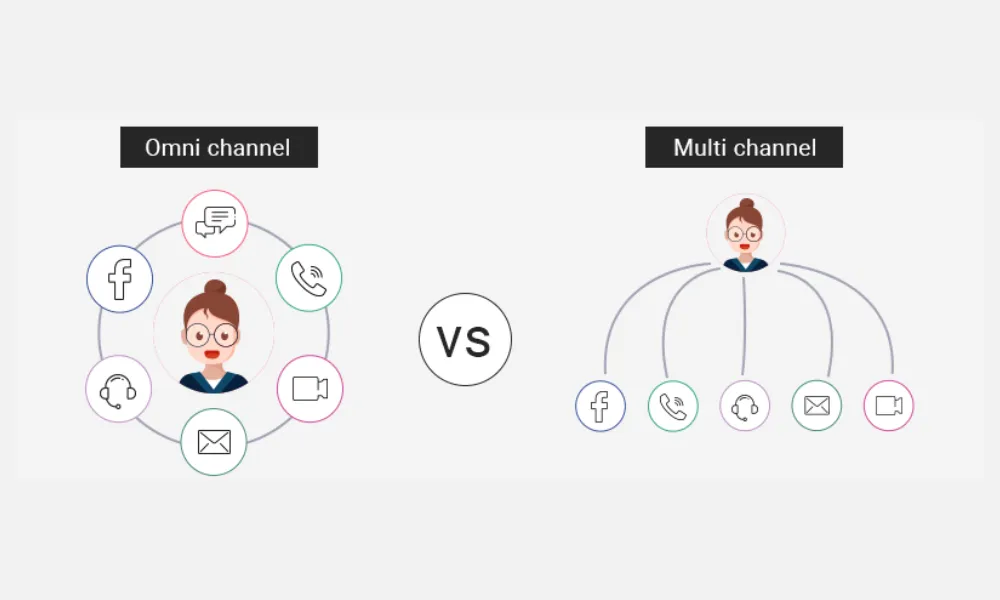
On the other hand, omnichannel capabilities go beyond merely offering multiple channels—they integrate them into a singular, cohesive experience. This means that a customer can switch between a brand’s website, mobile app, and physical store without feeling any disruption in their interaction with the business. A key aspect of omnichannel capabilities is the continuous flow of data across all channels, ensuring that no matter where or how a customer engages, their preferences, purchase history, and inquiries are recognized and seamlessly carried forward. This integration allows businesses to deliver a more personalized and convenient experience, significantly enhancing customer satisfaction and loyalty.
Core Concept of Omnichannel
At the heart of omnichannel capabilities is the idea of creating a unified customer journey. This journey is shaped by the ability to seamlessly connect touchpoints across online and offline platforms, delivering a consistent and personalized experience at every stage. Whether a customer interacts with a business through social media, visits a physical store, or uses a mobile app, omnichannel capabilities ensure that these touchpoints are connected, making transitions between them smooth and effortless.
A key component of this integration is data unification. Omnichannel capabilities leverage customer data collected from multiple channels to form a complete view of the customer. This unified data enables businesses to track customer behavior, preferences, and past interactions in real-time, which can then be used to personalize communication and offers, regardless of the channel being used. For instance, a customer who browses products online may receive a personalized recommendation or offer when they visit the store, based on their online activity. This level of integration helps businesses build stronger relationships with their customers by offering relevant and timely interactions.
Furthermore, omnichannel capabilities ensure that businesses can synchronize their operations across different platforms. Inventory management, customer support, and marketing campaigns are aligned in real time, providing customers with consistent experiences and reducing the risk of error or miscommunication. For example, if a customer orders a product online and chooses to pick it up in-store, omnichannel capabilities ensure that the inventory and order system are synchronized, preventing stock discrepancies and improving the overall experience.
How Omnichannel Solves Customer Fragmentation
One of the main challenges businesses face in delivering a high-quality customer experience is the fragmentation of customer interactions across various platforms. In traditional multichannel approaches, these interactions are often siloed, meaning that data and customer insights gathered on one platform (such as a website) are not available when the customer engages with a different platform (such as a physical store or a customer service representative). This fragmentation can result in disjointed experiences, with customers having to repeat information or re-establish relationships at each touchpoint, leading to frustration and a lack of brand loyalty.
Omnichannel capabilities directly address this issue of customer fragmentation by breaking down these silos and integrating all touchpoints into one cohesive system. When all channels are connected, businesses can provide a seamless customer journey that transcends individual platforms. For instance, with omnichannel capabilities in place, a customer who begins researching a product on a company’s website can later visit the physical store, where sales staff are already aware of the customer’s online activity. This continuity eliminates the need for customers to repeat their inquiries or preferences, significantly improving the overall experience.
In addition to solving fragmentation, omnichannel capabilities also empower businesses to offer more personalized services by consolidating data from different channels. By using customer data to track interactions across platforms, businesses can better understand their customers’ behaviors, preferences, and needs, leading to tailored recommendations, targeted promotions, and personalized communication. This not only increases customer satisfaction but also drives higher conversion rates, as customers feel understood and valued throughout their entire journey.
Moreover, omnichannel capabilities enable businesses to streamline operations internally, allowing for more efficient communication between departments such as sales, customer support, and marketing. When all teams have access to unified customer data, they can collaborate more effectively, ensuring that every customer interaction—regardless of the channel—is informed by the same set of information. This integration enhances operational efficiency while maintaining a high standard of service.
Components of Omnichannel Capabilities
Consistency Across Channels
One of the most crucial aspects of omnichannel capabilities is the ability to maintain consistency across all customer touchpoints. Whether a customer interacts with a brand through its website, mobile app, physical store, or social media channels, the messaging, brand voice, and overall experience should remain uniform. This consistency builds trust and reinforces the brand’s identity, making customers feel more confident in their interactions with the business.

In practice, this means that product information, promotions, and services should be the same across all channels. For example, if a customer sees a promotion on a mobile app, they should also be able to find the same promotion in the physical store or on the brand’s website. By ensuring that the customer experience remains consistent, businesses prevent confusion and frustration, which can occur when different channels offer conflicting information. Omnichannel capabilities provide the infrastructure to manage this consistency across all platforms.
Seamless Customer Experience
A core benefit of omnichannel capabilities is the seamless customer experience they offer across platforms and devices. In an omnichannel environment, customers can move fluidly from one channel to another without encountering interruptions or disruptions. For instance, a customer may start browsing products on their mobile phone, continue the process on a desktop, and complete the purchase in a physical store. Throughout this journey, the customer’s information, preferences, and shopping cart should remain intact across all touchpoints.
Achieving this seamless experience requires the integration of backend systems that can sync data in real-time. This enables businesses to track a customer’s interactions and provide continuity regardless of the device or platform used. Omnichannel capabilities make it possible to connect these systems, ensuring that a customer’s journey feels natural and cohesive. This not only enhances the overall experience but also reduces friction, making it easier for customers to engage with the brand and complete their transactions.
Data Integration
Data integration is another vital component of omnichannel capabilities. In an omnichannel strategy, businesses collect customer data from various sources, such as websites, mobile apps, in-store transactions, and social media interactions. Integrating this data allows businesses to create a unified view of the customer, enabling them to understand behaviors, preferences, and purchase histories.

With omnichannel capabilities, businesses can break down data silos and aggregate information from different touchpoints into a central system. This comprehensive dataset provides valuable insights that can be used to inform marketing strategies, customer service approaches, and product offerings. For example, if a customer frequently browses a particular product category online but hasn’t made a purchase, a business can use this data to send targeted promotions or product recommendations through email or in-store offers.
The ability to integrate and leverage data across channels is one of the core strengths of omnichannel capabilities, as it enables businesses to deliver a more personalized and relevant experience to their customers.
Personalization and Predictive Analytics
Omnichannel capabilities empower businesses to offer personalized experiences by using customer data and predictive analytics. Personalization is key to building strong customer relationships, as it allows businesses to tailor their messaging, recommendations, and offers to the individual needs and preferences of each customer.
By analyzing data gathered from various channels, businesses can create detailed customer profiles that include browsing history, purchase behavior, and engagement patterns. This data can then be used to offer personalized recommendations, such as suggesting products similar to past purchases or offering promotions on items the customer has shown interest in.
In addition to personalization, predictive analytics is a powerful tool enabled by omnichannel capabilities. Predictive analytics allows businesses to anticipate customer needs and behaviors based on historical data. For instance, by analyzing past purchase trends, a business can predict when a customer might be ready to make a repeat purchase and send a timely reminder or promotion. Predictive analytics can also help businesses optimize inventory levels, ensuring that popular items are in stock when customer demand is high.
Together, personalization and predictive analytics help businesses create highly targeted and effective marketing campaigns, improve customer engagement, and ultimately increase conversion rates.
Key points of Omnichannel Capabilities
Cross-Platform Integration
Integration of Online and Offline Channels
One of the most powerful features of omnichannel capabilities is the integration of online and offline channels. In today’s retail environment, customers often engage with brands through multiple touchpoints, including websites, mobile apps, and brick-and-mortar stores. The ability to merge these touchpoints into a unified experience is critical for meeting modern consumer expectations.
Omnichannel capabilities allow businesses to synchronize their online and offline operations, providing customers with a consistent experience no matter where or how they interact with the brand. For example, a customer might browse products online, place an order through a mobile app, and pick up the item in-store. Omnichannel integration ensures that all of these steps are connected, making it easy for the customer to move between different channels without experiencing any gaps in service or information.
This integration also allows for features such as buy online, pick up in-store (BOPIS) or ship from store options, where customers can order products online and either collect them from a nearby store or have them shipped directly from a local store. These capabilities make shopping more convenient for customers and help businesses optimize their logistics and fulfillment processes by leveraging their physical store networks.
Unified Customer Data
A critical element of omnichannel capabilities is the collection and analysis of customer data from all channels to create a comprehensive and unified customer profile. In a traditional multichannel setup, customer data is often siloed, with information from online purchases, in-store interactions, and mobile app activity stored in separate systems. This disjointed data prevents businesses from gaining a full understanding of their customers’ behaviors and preferences, limiting their ability to deliver personalized experiences.
With omnichannel capabilities, businesses can centralize all customer data, regardless of where or how it was collected. By integrating data from every touchpoint, companies can create a single, unified view of each customer. This comprehensive customer profile includes details such as purchase history, browsing behavior, product preferences, and interactions with customer service.
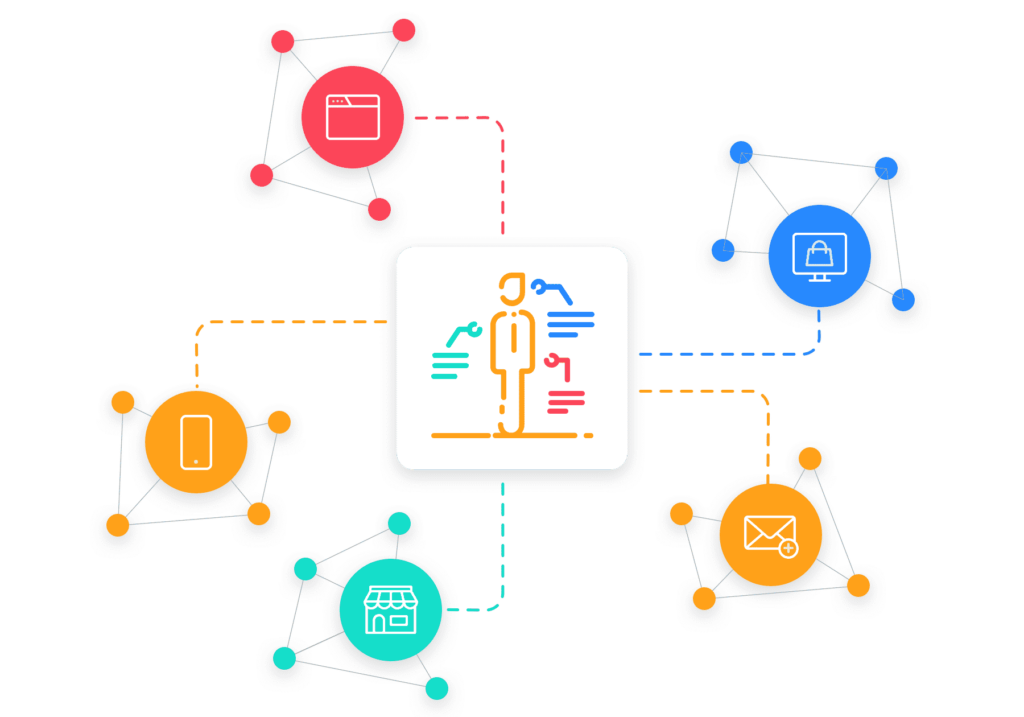
The ability to access and analyze unified customer data enables businesses to offer highly personalized experiences. For example, a customer who frequently browses specific product categories online can receive tailored product recommendations in-store or through a mobile app, based on their browsing history. Additionally, unified data allows businesses to offer seamless customer support, where service representatives can access a customer’s full history and address issues or queries more effectively.
Unified customer data also provides insights that can inform marketing strategies, enabling businesses to create targeted campaigns that resonate with individual customers. By leveraging omnichannel capabilities to unify customer data, companies can ensure that every interaction is relevant, timely, and aligned with the customer’s preferences, ultimately driving higher engagement and conversion rates.
Real-Time Inventory Management
Real-time inventory management is another key feature of omnichannel capabilities, allowing businesses to synchronize their inventory across all platforms and provide up-to-date product availability information to customers. In a highly competitive retail environment, managing inventory efficiently is crucial for meeting customer expectations and optimizing business operations.
With omnichannel capabilities, businesses can track inventory levels in real time across all sales channels, including online stores, physical locations, and distribution centers. This real-time visibility ensures that customers always have accurate information about product availability, whether they are shopping online or in-store. For example, a customer browsing a website can see whether an item is in stock at their nearest store or available for immediate shipping.

Additionally, real-time inventory management enables businesses to implement features such as BOPIS or reserve online, pay in-store where customers can reserve an item online and collect it from a physical location. This feature not only enhances the customer experience by providing more flexible shopping options, but it also helps businesses optimize inventory turnover and reduce excess stock.
Furthermore, omnichannel inventory management can help businesses avoid stockouts and overstock situations. By monitoring inventory in real time, businesses can make more informed decisions about restocking and allocating products across different locations. This capability is especially valuable during peak shopping seasons or promotional events, where demand fluctuations can be more unpredictable.
The ability to synchronize inventory across all channels also improves operational efficiency, reducing the risk of errors or delays in fulfillment. With real-time inventory management, businesses can ensure that customers always have access to accurate information, leading to fewer cancellations and increased customer satisfaction.
Centralized Marketing and Communication
Automated Marketing Campaigns
Omnichannel capabilities offer businesses the tools to automate marketing campaigns across all platforms, ensuring that customers receive timely and relevant communications no matter where they engage with the brand. Automated marketing campaigns are particularly powerful because they reduce the manual effort required to maintain personalized communication at scale, allowing businesses to reach a wider audience while delivering highly tailored experiences.
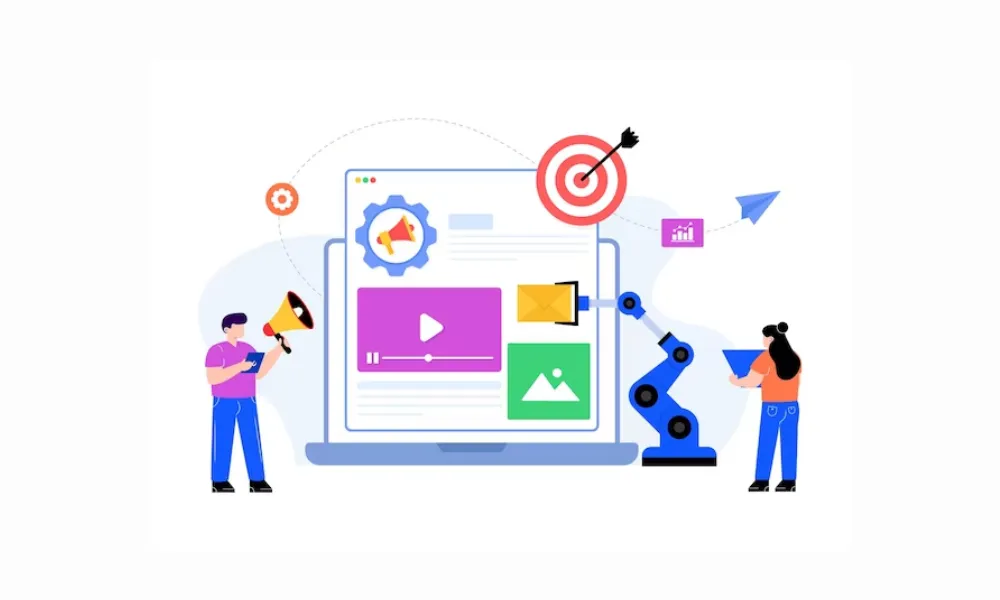
By using omnichannel tools, businesses can create marketing campaigns that automatically trigger based on customer behavior, preferences, and engagement history. For instance, a customer who abandons their shopping cart online can receive a personalized reminder via email, followed by a promotional offer through SMS if they still haven’t completed the purchase. These automated sequences help guide the customer through their purchasing journey without requiring human intervention, ultimately increasing the likelihood of conversion.
Moreover, automation ensures that marketing efforts remain consistent across all channels. Customers can receive a cohesive experience, whether they’re interacting with a business through social media, email, or the company’s mobile app. Omnichannel capabilities enable businesses to set up dynamic, cross-platform marketing strategies that respond to individual customer needs and preferences in real-time, creating a more personalized and engaging customer journey.
Unified Messaging
Another critical feature of omnichannel capabilities is unified messaging, which ensures that all communication channels deliver consistent, relevant content. Unified messaging is essential for building a strong, recognizable brand voice and maintaining clarity across the many touchpoints customers use to interact with a business.
With omnichannel capabilities, businesses can create centralized messaging strategies that ensure every customer interaction reflects the same core values, product information, and promotional offers. Whether a customer is browsing a website, receiving an email, engaging on social media, or communicating via SMS, the content they encounter should be aligned and consistent. For example, if a company launches a promotion on their website, that promotion should also be reflected in emails, social media posts, and mobile app notifications. This alignment creates a unified experience that reinforces the brand’s message and prevents confusion.
Unified messaging also plays a crucial role in customer support and service interactions. Customers expect businesses to understand their needs and provide relevant solutions, regardless of the channel they use. With omnichannel capabilities, customer service representatives can access a customer’s complete interaction history across all channels, enabling them to offer a more informed and personalized response. This ensures that customers feel heard and valued, which can lead to increased satisfaction and brand loyalty.
Additionally, unified messaging helps prevent the common pitfall of disjointed communication, where customers receive inconsistent or conflicting messages across channels. By integrating all communication platforms under a single system, businesses can avoid these errors and ensure that every customer interaction contributes positively to the overall brand experience.
AI-Driven Personalization
Personalization has become a critical element of modern marketing, and omnichannel capabilities, enhanced by AI, make it possible to offer tailored content at scale. AI-driven personalization allows businesses to analyze vast amounts of customer data in real-time, identifying patterns and preferences that can inform more relevant and timely marketing efforts.
Omnichannel capabilities powered by AI can track customer behavior across multiple channels, including website visits, social media interactions, email engagement, and in-store purchases. Using this data, AI tools can create highly personalized marketing messages that speak directly to individual customers. For example, AI algorithms can recommend products based on a customer’s browsing history, suggest complementary items at checkout, or deliver personalized promotional offers based on past purchase behavior.

AI-driven personalization also allows businesses to anticipate customer needs and proactively engage with them at the right time. Predictive analytics, a key aspect of AI in omnichannel marketing, helps businesses forecast future customer behavior, enabling them to target customers with relevant offers before they even realize they need them. For example, if a customer frequently purchases a certain product every few months, the business can send a reminder or offer before the customer runs out, increasing the likelihood of repeat purchases.
The ability to tailor content based on real-time data helps businesses create a more meaningful connection with their customers. Instead of sending generic, one-size-fits-all messages, AI-driven personalization ensures that every interaction feels relevant and personalized to the individual’s preferences and behaviors. This level of personalization leads to higher engagement rates, stronger customer loyalty, and ultimately, increased revenue.
Omnichannel Customer Support
Consistent Support Across Channels
A hallmark of omnichannel capabilities is providing consistent customer support across all channels. In today’s connected world, customers expect to be able to interact with a business through their preferred medium, whether that’s phone, live chat, email, or social media. However, the challenge for many businesses is maintaining the same level of quality and coherence in support across these different platforms.
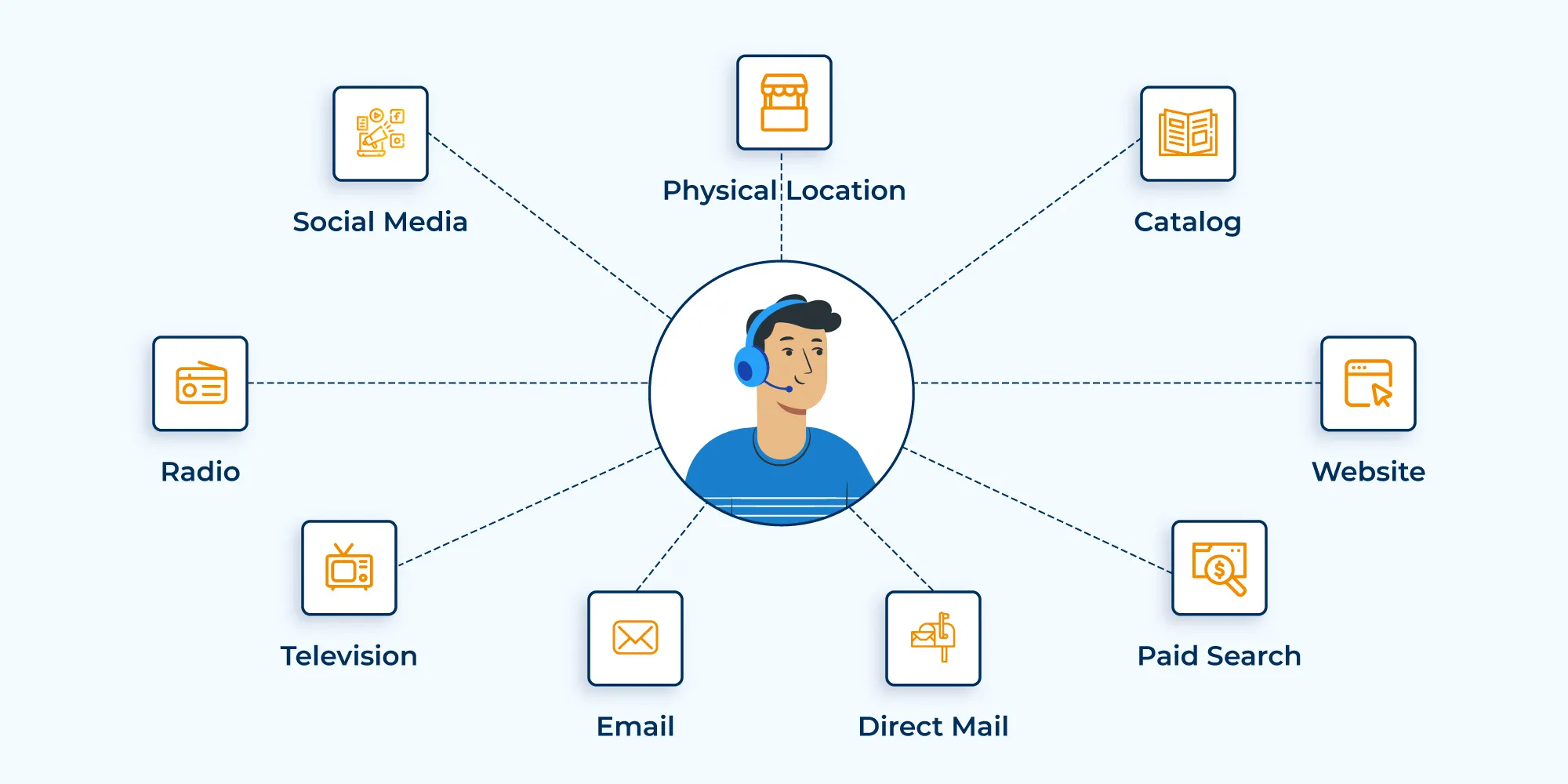
Omnichannel capabilities enable businesses to standardize their support processes, ensuring that no matter where a customer reaches out for help, they will receive the same high-quality assistance. For example, if a customer initiates a conversation on social media, then continues the discussion over email, the support team should be able to pick up where the conversation left off, without the customer needing to repeat themselves. This level of consistency is critical for customer satisfaction, as it reduces friction and frustration, while demonstrating that the business values the customer’s time and experience.
By utilizing omnichannel capabilities, businesses can ensure that their support agents have access to the same information and resources across all platforms. This means that whether a customer calls in with a query or sends a message through social media, the support team can quickly access their history and resolve issues more efficiently. Additionally, consistent support across channels helps businesses build trust with their customers, reinforcing that they will receive reliable service no matter how they choose to engage.
Self-Service Portals
Another vital feature of omnichannel capabilities in customer support is the integration of self-service portals. As customers become more self-reliant and tech-savvy, they increasingly expect businesses to provide tools that allow them to resolve issues on their own, without having to reach out to a support agent. Self-service portals, which typically include knowledge bases, frequently asked questions (FAQs), and troubleshooting guides, are essential for meeting this demand.
Omnichannel capabilities allow businesses to integrate self-service tools across multiple platforms, ensuring that customers have access to the same helpful resources regardless of how they engage with the brand. For instance, a customer visiting a website can quickly search a knowledge base for solutions, while another using a mobile app can access the same information with just a few taps. By making self-service options available across all channels, businesses not only empower their customers but also reduce the workload for support teams by handling common issues more efficiently.
Self-service portals are particularly useful in an omnichannel environment because they are available 24/7, enabling customers to find answers to their questions at any time, without waiting for an agent’s availability. These portals can be enhanced by omnichannel capabilities through the use of AI-powered chatbots that can guide users to the most relevant information based on their inquiries. When integrated with a CRM system, self-service tools can even offer personalized content to customers, such as solutions tailored to their previous interactions or product purchases.
By offering self-service options through omnichannel capabilities, businesses can enhance the customer experience by providing quick, convenient solutions while optimizing their support processes.
Omnichannel CRM Integration
One of the most powerful features of omnichannel capabilities is the integration of CRM systems into the support infrastructure. Omnichannel CRM integration enables businesses to gain a comprehensive, 360-degree view of their customers by consolidating all interactions and touchpoints into a single platform. This holistic approach allows support teams to better understand their customers’ needs, preferences, and past behaviors, resulting in more personalized and effective support.
With omnichannel CRM integration, every customer interaction — whether it’s through email, chat, phone, or social media — is captured and stored in a centralized system. This means that support agents have immediate access to a customer’s entire history with the company, including purchase records, previous support requests, and even marketing interactions. Having this information at their fingertips allows agents to provide faster, more accurate support, as they can anticipate customer needs and address issues with greater context.
For example, if a customer calls in with a question about a product they recently purchased, the agent can quickly pull up their purchase history and previous interactions to provide a more informed response. Additionally, CRM integration enables omnichannel capabilities to support proactive customer service. By analyzing customer data, businesses can anticipate potential issues or needs before the customer even reaches out, such as sending reminders for product maintenance or offering personalized recommendations based on past purchases.
Omnichannel CRM integration also improves collaboration within support teams, as all customer data is shared across departments. Whether the marketing team is launching a new campaign, or the sales team is following up on a lead, everyone in the organization has access to the same comprehensive customer profile. This consistency ensures that the entire business is aligned in providing a seamless customer experience, further enhancing the value of omnichannel capabilities.
Mobile Commerce and App Integration
Mobile Optimization
At the core of successful omnichannel capabilities is the ability to ensure that all content, customer service, and purchasing options are fully optimized for mobile use. Mobile optimization is crucial in today’s retail environment, where an increasing number of consumers are using their smartphones to browse, shop, and communicate with businesses. An optimized mobile experience is not only about having a responsive website but also about providing a smooth, fast, and intuitive experience tailored to the unique demands of mobile users.
Omnichannel capabilities enable businesses to create a consistent and engaging mobile experience that mirrors the functionality of their desktop websites, physical stores, and other channels. This includes making product searches easy, ensuring fast page load times, providing high-quality images, and integrating features like one-click purchasing and quick access to customer support. Mobile-optimized content also means that the website or app must be responsive, adapting seamlessly to different screen sizes and orientations.
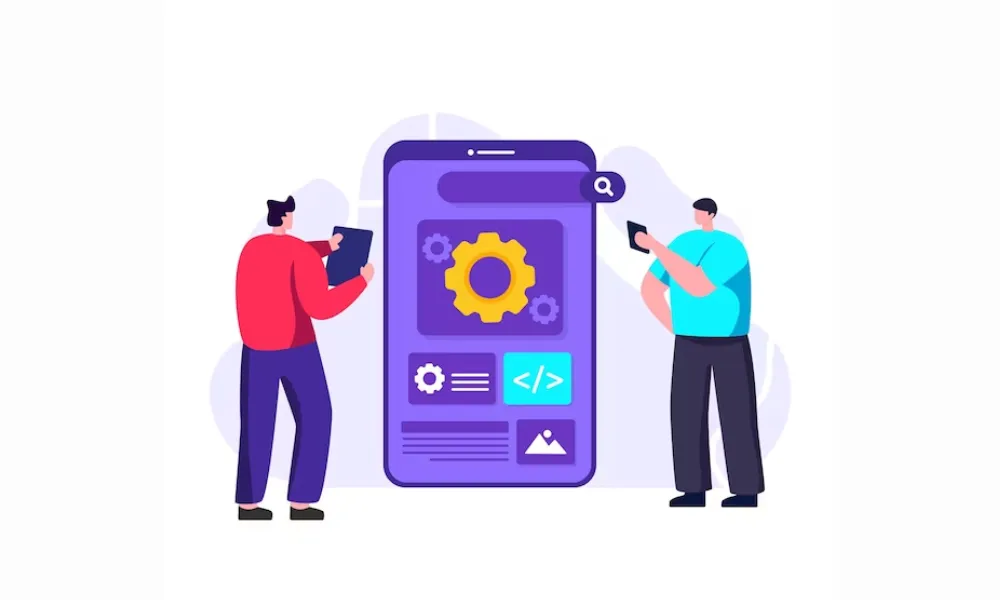
Beyond the basics of responsiveness, mobile optimization also entails leveraging mobile-specific features such as geolocation services, push notifications, and mobile-friendly forms to enhance user interaction. Omnichannel capabilities ensure that these features are fully integrated with other channels, creating a cohesive experience where customers can move between mobile, web, and in-store environments without encountering friction or inconsistencies.
By optimizing mobile experiences, businesses can not only meet customer expectations but also improve engagement and conversion rates. Mobile commerce is often where the purchase journey begins, so having an optimized platform is crucial for capturing sales and providing a positive overall experience.
Mobile Loyalty Programs
Mobile apps are a powerful tool for enhancing loyalty programs, and omnichannel capabilities allow businesses to integrate these programs seamlessly across all customer touchpoints. Through mobile apps, businesses can offer real-time rewards, incentives, and personalized offers that drive engagement and repeat purchases. The integration of mobile loyalty programs into an omnichannel strategy helps create a consistent and rewarding experience for customers, whether they’re shopping online, in-store, or through the app.
One of the advantages of mobile loyalty programs is that they can provide real-time benefits to customers based on their behavior and location. For example, a customer who frequently shops at a physical store might receive a personalized offer or discount on their mobile app while they’re nearby, encouraging them to visit the store. Similarly, customers who make purchases through the app can be rewarded instantly with points or discounts, which can then be used for future purchases, whether online or offline.
Omnichannel capabilities also enable businesses to track customer interactions across channels and tailor loyalty rewards accordingly. For instance, a customer’s app activity, in-store purchases, and online browsing history can all be used to provide personalized incentives. If a customer regularly buys certain products through the mobile app, they might receive exclusive promotions related to those items when visiting the store. This integration strengthens customer engagement and loyalty by providing meaningful, context-specific rewards that enhance the overall shopping experience.
Mobile loyalty programs, powered by omnichannel capabilities, provide businesses with an effective way to retain customers by delivering real-time, personalized rewards that encourage continued interaction with the brand across all platforms.
Mobile Payment Integration
Another key feature of omnichannel capabilities is the integration of mobile payment options, which aligns with omnichannel strategies to provide a frictionless checkout experience. As mobile devices become more central to the purchasing process, offering seamless, secure mobile payment options is crucial for meeting customer expectations and reducing barriers to purchase. Omnichannel capabilities allow businesses to incorporate mobile payment systems across all channels, making it easy for customers to complete transactions in-store, online, or through a mobile app with minimal effort.
Mobile payment integration supports a variety of payment methods, such as digital wallets (Apple Pay, Google Pay), QR code payments, and app-based payment options, allowing customers to choose the method they prefer. This flexibility not only improves the user experience but also speeds up the checkout process, reducing cart abandonment rates and increasing overall sales.
For instance, a customer might browse products on their mobile phone, add items to their cart, and then decide to complete the purchase in-store. With omnichannel capabilities in place, the customer can pay via their mobile device using a digital wallet or another mobile payment option without needing to re-enter payment information or queue at a traditional checkout. The integration ensures that the payment process is smooth and consistent, no matter where or how the customer chooses to pay.
Additionally, mobile payment integration allows businesses to offer contactless payment options, which have become increasingly popular for both safety and convenience. Whether in-store or online, customers can complete transactions quickly and securely with just a few taps on their mobile device. The ability to integrate mobile payments across all platforms strengthens a business’s omnichannel capabilities by ensuring that customers experience minimal friction during the purchasing process, leading to higher satisfaction and retention rates.
Inventory Management
Centralized Inventory Control
Centralized inventory control is one of the foundational features of omnichannel capabilities. This capability enables businesses to manage and monitor inventory levels across all channels—whether online, in-store, or in distribution centers—from a single, unified system. This eliminates the need for multiple, disconnected systems that can lead to inconsistencies, inefficiencies, and errors in stock management.
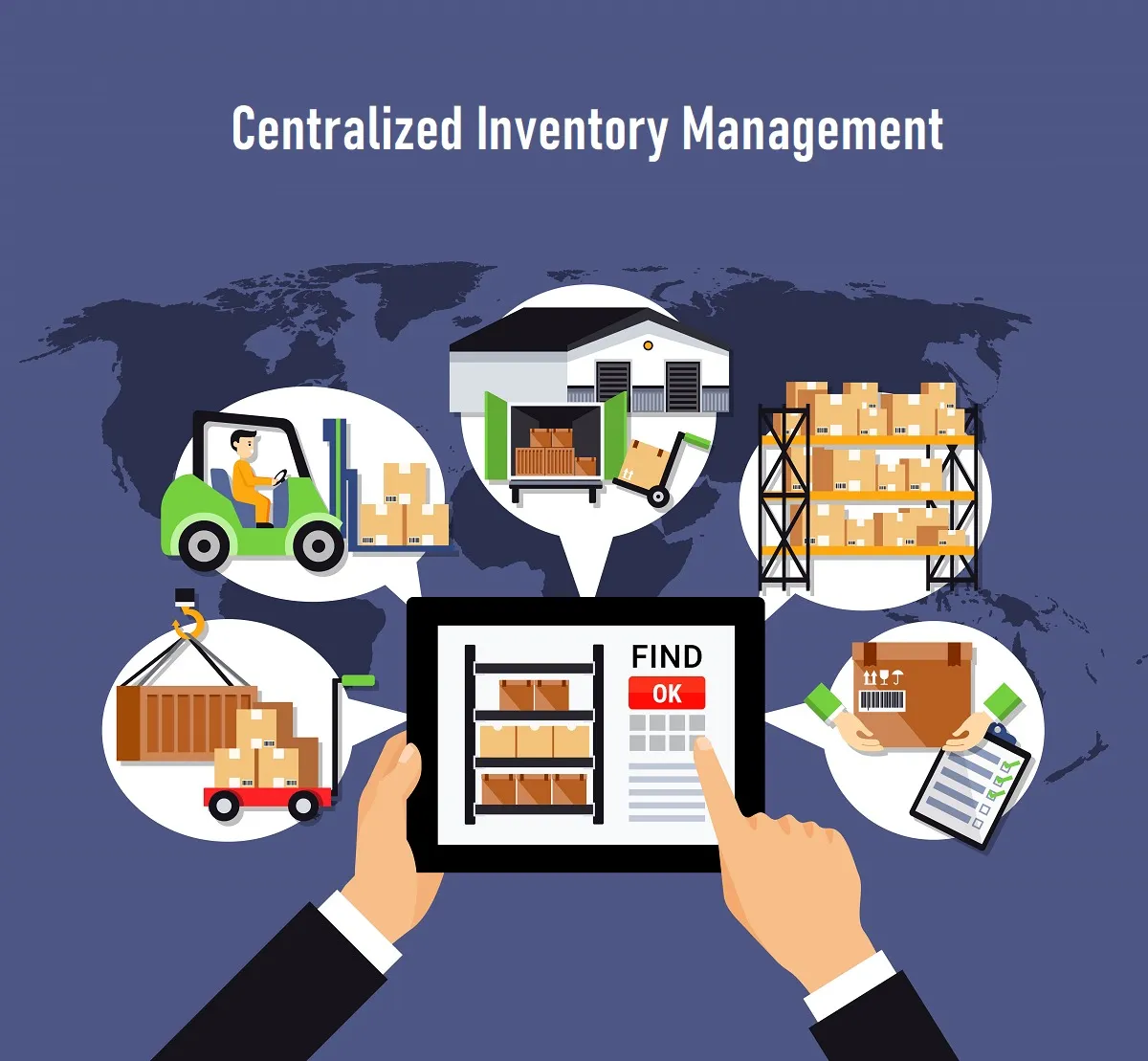
With centralized inventory control, businesses can gain a holistic view of their inventory, allowing them to track stock movement in real-time, allocate resources efficiently, and make informed decisions about restocking, product placement, and fulfillment. Whether a customer places an order online or purchases in-store, the inventory is updated across all systems simultaneously, ensuring that stock levels are accurately reflected. This level of control is essential for providing customers with a seamless shopping experience, as it prevents issues like over-selling or failing to fulfill an order due to outdated stock data.
Omnichannel capabilities that include centralized inventory control also streamline internal operations, reducing the administrative burden on staff and minimizing the potential for human error. By consolidating inventory management into one system, businesses can focus on optimizing their inventory levels and improving customer satisfaction.
Real-Time Stock Visibility
Real-time stock visibility is a key feature of omnichannel capabilities, as it ensures that both customers and sales teams have access to up-to-the-minute information on product availability across all locations, including online stores, physical stores, and warehouses. This transparency is critical in an omnichannel environment where customers expect accurate information about product availability at all times.

With real-time stock visibility, customers can check whether a product is in stock before making a purchase, whether online or in-store. This reduces the frustration of finding out that an item is out of stock after placing an order or visiting a store. Similarly, sales teams can rely on real-time data to provide accurate information to customers, whether they are answering questions in-store or supporting online sales. Real-time inventory updates also help prevent issues like double-selling or overselling products, which can lead to customer dissatisfaction.
For example, if a customer places an order online for an item that is in stock at a nearby store, the system will immediately reflect that sale, ensuring that other customers or store staff do not sell the same item to someone else. This level of coordination between online and offline channels is essential for businesses that want to provide a seamless shopping experience and build trust with their customers.
Automated Restocking and Forecasting
Automated restocking and forecasting is another vital aspect of omnichannel capabilities, enabling businesses to maintain optimal inventory levels across all channels. By leveraging data-driven analytics, businesses can automate the restocking process based on demand patterns, sales forecasts, and seasonal trends. This ensures that popular products are always available to meet customer demand while reducing the likelihood of overstocking slow-moving items.
Omnichannel capabilities enable businesses to use historical sales data, market trends, and real-time stock movement to predict future demand accurately. Automated systems can then generate purchase orders or restocking requests when inventory levels reach a predefined threshold. This reduces the need for manual stock monitoring and restocking, freeing up valuable time and resources for other business operations.
By automating these processes, businesses can ensure that they are always prepared for fluctuations in customer demand. For example, during peak shopping periods, such as the holiday season, businesses can use omnichannel capabilities to predict higher demand for specific products and ensure that stock levels are adjusted accordingly. This not only improves customer satisfaction by ensuring that items are available when needed but also reduces the risk of stockouts, which can result in lost sales and missed opportunities.
Click-and-Collect and Ship-from-Store Capabilities
Omnichannel capabilities also support flexible fulfillment options like click-and-collect and ship-from-store, which improve convenience for customers and maximize inventory efficiency. Click-and-collect, also known as buy online, pick up in-store (BOPIS), allows customers to browse and purchase products online and then collect their order from a nearby store. This option is becoming increasingly popular as it combines the convenience of online shopping with the immediacy of in-store pickup.
Ship-from-store capabilities, on the other hand, allow businesses to fulfill online orders using stock from physical store locations. This is particularly useful for businesses with multiple retail locations, as it enables them to optimize inventory by shipping products from the store closest to the customer, reducing shipping times and costs.
Both click-and-collect and ship-from-store capabilities rely on omnichannel systems that integrate inventory data across all channels. These features not only enhance the customer experience by offering flexible and fast fulfillment options but also help businesses reduce excess stock in certain locations by redistributing it to meet demand in other areas. This flexibility is especially valuable in an omnichannel environment where customers expect to be able to shop and receive products on their own terms.
Minimizing Stockouts and Overstocks
One of the primary goals of effective inventory management is to strike a balance between having enough stock to meet customer demand and avoiding excess inventory that leads to high carrying costs. Omnichannel capabilities help businesses achieve this balance by providing real-time insights into stock levels, customer demand, and sales trends.
By analyzing data across all channels, omnichannel capabilities allow businesses to forecast demand more accurately and adjust inventory levels accordingly. This helps to minimize stockouts, where products are unavailable when customers want to purchase them, as well as overstocks, where excess inventory ties up capital and storage space. For instance, if a certain product is selling well online but not in physical stores, omnichannel capabilities can trigger a redistribution of stock to meet demand where it’s highest. Similarly, slow-moving stock in one location can be offered at a discount or transferred to another location where demand is greater, reducing the risk of excess inventory.
Incorporating automated restocking and real-time stock visibility into an omnichannel strategy helps businesses maintain the right balance of inventory across all channels, ensuring that customers have access to the products they want without the business incurring unnecessary costs.
Excellency of Utilizing Omnichannel Capabilities
Enhanced Customer Experience
Seamless Journeys
Omnichannel capabilities are designed to provide customers with seamless journeys across all touchpoints, ensuring that they can switch between channels without interruption or frustration. In a multichannel environment, interactions are often siloed, meaning that if a customer starts browsing products on a mobile app but decides to complete the purchase on a desktop or in-store, they may encounter gaps in information, inconsistent experiences, or the need to re-enter information. This can lead to frustration and may even result in abandoned purchases.
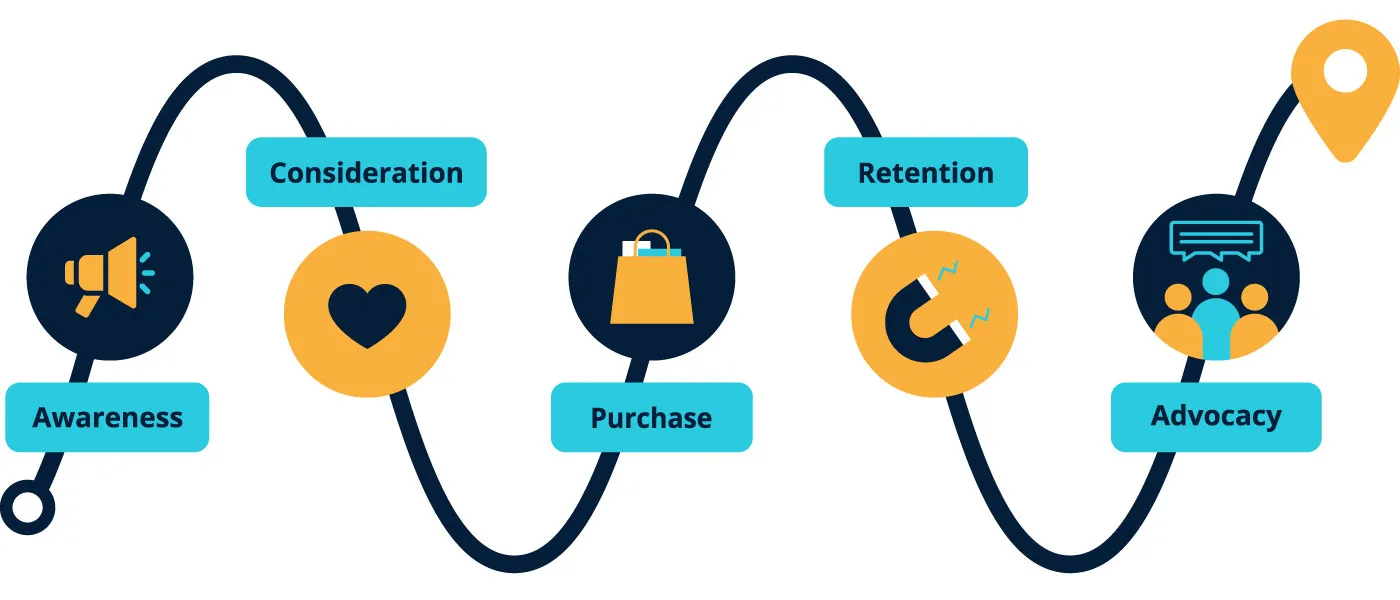
By contrast, omnichannel capabilities integrate all channels into a single, cohesive experience. For example, if a customer adds items to their shopping cart on a website, they can later complete the purchase in-store or on a mobile app without needing to start the process over. Similarly, a customer who starts a support inquiry via email can pick up the conversation with a live chat agent without needing to repeat their issue. This seamless integration of touchpoints not only improves the overall customer experience but also reduces the friction that can cause customers to abandon their purchase or leave the brand entirely.
Moreover, seamless journeys extend beyond just purchasing. Omnichannel capabilities allow customers to interact with businesses on their terms, whether it’s researching products, making inquiries, or seeking support, with all channels working together harmoniously. This creates a more fluid and connected experience that feels natural and intuitive for the customer, making it easier for them to engage with the brand and complete their desired actions.
Customer Convenience
Another major benefit of omnichannel capabilities is the convenience they offer customers. In today’s fast-paced world, consumers expect flexibility and ease in how they shop, communicate, and receive support. Omnichannel capabilities provide this convenience by allowing customers to engage with brands in the way that suits them best—whether that’s through a website, mobile app, physical store, or even social media.
With omnichannel capabilities, customers can browse products online, purchase in-store, or receive real-time updates on their order status through a mobile app. They can access customer service through their preferred platform, be it phone, chat, or email, without being restricted to a single channel. This level of convenience is particularly important for modern consumers who expect to be able to interact with businesses on their own schedule and terms.
Furthermore, omnichannel capabilities provide convenience through features like click-and-collect (buy online, pick up in-store) or ship-from-store options, which allow customers to choose how and when they receive their purchases. For instance, a customer may choose to order an item online and pick it up at a nearby store to avoid shipping delays, or they might prefer to have it shipped directly from a local store for faster delivery. These flexible fulfillment options, enabled by omnichannel capabilities, cater to the customer’s individual preferences and make the shopping experience more convenient and enjoyable.
Ultimately, by offering multiple touchpoints and the ability to seamlessly transition between them, omnichannel capabilities empower customers to interact with a brand in the way that best fits their lifestyle. This flexibility and convenience are key drivers of customer satisfaction and loyalty, as they reduce friction and ensure that the customer’s journey is as smooth and efficient as possible.
Personalization
One of the standout benefits of omnichannel capabilities is the ability to deliver highly personalized experiences. Personalization is becoming increasingly important for businesses, as consumers now expect tailored recommendations, offers, and communication based on their individual preferences and behaviors. Omnichannel capabilities enable businesses to leverage data from multiple channels to provide this level of personalization, creating a more engaging and relevant experience for each customer.
By integrating data across various touchpoints—such as online browsing, in-store purchases, and mobile app interactions—omnichannel capabilities allow businesses to build a comprehensive view of each customer. This unified customer profile includes details such as purchase history, product preferences, and browsing behavior, enabling businesses to offer personalized recommendations and targeted promotions. For example, a customer who frequently browses a particular category of products online may receive personalized discounts or suggestions for related items the next time they visit the store or open the mobile app.

Omnichannel capabilities also support real-time personalization, allowing businesses to respond to customer behavior as it happens. For instance, if a customer abandons their shopping cart online, they might receive a personalized email or SMS reminder with an incentive to complete their purchase. Similarly, customers can receive tailored product recommendations while they browse based on their previous purchases or preferences, enhancing the overall shopping experience.
Additionally, personalization extends to customer service interactions. With omnichannel capabilities, support agents have access to a customer’s full interaction history across all channels, enabling them to provide personalized assistance based on past issues or inquiries. This ensures that customers receive relevant support that meets their specific needs, further improving their overall experience with the brand.
By leveraging omnichannel capabilities to offer personalized experiences, businesses can create stronger connections with their customers, increase engagement, and foster long-term loyalty. Personalized interactions make customers feel valued and understood, which is critical in today’s competitive marketplace where businesses must go the extra mile to stand out and retain their audience.
Increased Customer Retention and Loyalty
Consistent Experience
One of the most significant benefits of omnichannel capabilities is the ability to provide a consistent experience across all channels. Modern consumers engage with brands through multiple touchpoints, such as online stores, physical locations, social media platforms, and mobile apps. Without omnichannel capabilities, the customer experience can become fragmented, with different messaging, product availability, or service quality across channels. This lack of consistency can lead to confusion and frustration, ultimately pushing customers toward competitors.
Omnichannel capabilities solve this issue by ensuring that customers receive the same high-quality experience no matter how they interact with the brand. Whether a customer is shopping in-store, browsing products online, or seeking customer support via a mobile app, the experience should feel seamless and consistent. Product information, pricing, promotions, and customer service must align across all platforms, reinforcing the brand’s message and reliability.
This consistency is crucial for building trust and loyalty. When customers know they can count on a brand to deliver the same positive experience regardless of the channel, they are more likely to return and make repeat purchases. Consistency also reduces friction in the customer journey, making it easier for customers to move between channels without encountering disruptions or discrepancies. By offering a reliable and cohesive experience, omnichannel capabilities help strengthen brand loyalty, encouraging customers to continue choosing the brand over others.
Reward Programs and Loyalty
Loyalty programs are a powerful tool for increasing customer retention, and omnichannel capabilities allow businesses to create and integrate reward programs that span both online and offline touchpoints. In traditional loyalty programs, rewards are often limited to a specific channel, such as earning points for in-store purchases or receiving discounts through online shopping. However, omnichannel capabilities enable businesses to unify these efforts, creating a more flexible and appealing program that rewards customers regardless of how or where they shop.
By integrating loyalty programs across multiple channels, omnichannel capabilities provide a more comprehensive and rewarding experience for customers. For instance, a customer might earn loyalty points for making a purchase in-store, and then redeem those points for a discount when shopping online. This flexibility makes the program more accessible and convenient, encouraging customers to engage with the brand through various touchpoints. Additionally, omnichannel capabilities allow for real-time updates on rewards and points, giving customers immediate visibility into their loyalty status and encouraging them to continue participating in the program.

Personalization, another key aspect of omnichannel capabilities, also enhances loyalty programs by offering targeted rewards based on individual preferences and behaviors. For example, a customer who frequently purchases a certain category of products might receive personalized discounts or early access to new arrivals in that category, further incentivizing their loyalty. Omnichannel capabilities enable businesses to use data from all customer interactions—both online and offline—to create a more personalized loyalty experience that resonates with each individual customer.
By making loyalty programs more integrated and personalized, omnichannel capabilities not only encourage repeat business but also help to foster deeper emotional connections with the brand. Customers feel valued when they receive rewards tailored to their specific shopping habits, making them more likely to remain loyal to the brand over the long term.
Higher Customer Satisfaction
Customer satisfaction is a direct driver of loyalty, and omnichannel capabilities significantly enhance satisfaction by meeting customer expectations for seamless, integrated experiences. Today’s consumers expect flexibility and convenience in how they interact with brands, whether it’s shopping online, visiting a physical store, or communicating via social media. Omnichannel capabilities make it possible to deliver on these expectations, providing customers with the ability to engage with the brand on their terms while enjoying a consistent and personalized experience.
One of the key ways omnichannel capabilities improve customer satisfaction is by offering smooth transitions between channels. For example, a customer might start browsing products on a mobile app, add items to their cart, and then complete the purchase on a desktop computer or in-store. Without omnichannel capabilities, this process might be disrupted, with the customer needing to restart their search or enter their information multiple times. However, omnichannel capabilities ensure that all customer data is synchronized across platforms, allowing customers to pick up where they left off, making the entire journey more convenient and hassle-free.

Additionally, omnichannel capabilities improve customer satisfaction by offering a more personalized experience. By leveraging customer data from all touchpoints, businesses can tailor their communications, offers, and services to each individual’s preferences and needs. For instance, a customer might receive personalized product recommendations based on their previous purchases or customized promotions that reflect their browsing history. This level of personalization makes customers feel understood and valued, increasing their satisfaction and likelihood of returning to the brand.
Furthermore, omnichannel capabilities ensure that customers have access to consistent support across all channels. Whether they need assistance in-store, online, or through social media, customers can expect the same level of service, with support teams having access to their full interaction history. This makes it easier to resolve issues quickly and efficiently, reducing frustration and boosting satisfaction.
By enhancing the overall customer experience through consistency, convenience, and personalization, omnichannel capabilities help businesses meet and exceed customer expectations. When customers are satisfied with their interactions, they are far more likely to remain loyal to the brand and continue making repeat purchases.
Improved Data Insights and Analytics
Comprehensive Customer Data
Omnichannel capabilities enable businesses to collect and consolidate data from various touchpoints, creating a comprehensive view of the customer. Traditionally, customer data might be siloed across different departments or platforms, leading to fragmented insights and missed opportunities. However, with omnichannel capabilities, all data from online transactions, in-store purchases, mobile app interactions, and even social media engagement can be unified into a single system. This creates a complete picture of each customer, offering deep insights into their preferences, behaviors, and interactions with the brand.
Comprehensive customer data provides valuable insights into patterns and trends that businesses can use to optimize their strategies. For example, a business might discover that a particular customer frequently browses products online before making a purchase in-store. By understanding this behavior, the business can tailor its marketing efforts to engage the customer at the right touchpoints, perhaps offering online promotions that encourage the customer to visit the store. Additionally, omnichannel capabilities allow businesses to track the entire customer journey, identifying key touchpoints that drive conversions and points of friction that may lead to abandoned purchases.
This unified data not only supports better marketing and sales strategies but also empowers customer service teams. With access to a complete customer profile, support agents can provide personalized assistance based on the customer’s full interaction history. Whether a customer is reaching out for help with an online order or asking about a product in-store, the support team has the context they need to offer relevant, informed solutions.
Predictive Analytics
Omnichannel capabilities also enable businesses to leverage predictive analytics, a powerful tool for anticipating customer needs and making more accurate business forecasts. By analyzing historical data and real-time interactions, businesses can predict future trends, customer behaviors, and sales patterns. Predictive analytics, powered by the data collected through omnichannel systems, helps companies make informed decisions about inventory management, marketing campaigns, and customer outreach.

For instance, predictive analytics can be used to forecast demand for specific products based on historical sales data across channels. If a certain product sells well during the holiday season every year, omnichannel capabilities can help businesses ensure that stock levels are adjusted accordingly, preventing stockouts or overstocks. Similarly, predictive analytics can be used to personalize marketing efforts by identifying customers who are likely to make a purchase based on their past behaviors. For example, a business could send a targeted promotion to a customer who has shown interest in a particular product category, increasing the likelihood of conversion.
Moreover, predictive analytics helps businesses optimize their resources. By identifying which products are most likely to sell and when, companies can make more efficient use of their inventory and marketing budgets. Predictive insights can also be used to enhance customer loyalty programs by offering rewards and incentives based on anticipated customer behaviors, ensuring that customers remain engaged with the brand over the long term.
Customer Behavior Tracking
Omnichannel capabilities provide businesses with the tools to track customer behavior across all channels, offering invaluable insights into customer preferences, pain points, and engagement patterns. In today’s retail landscape, customers often interact with a brand through multiple touchpoints, from browsing products on a website to visiting a physical store or interacting with the brand on social media. Without omnichannel capabilities, it can be difficult to connect these interactions and form a cohesive understanding of the customer journey.
With omnichannel capabilities, businesses can track every interaction a customer has with the brand, regardless of the channel, and use this information to identify trends and patterns in customer behavior. For example, a business might notice that customers tend to browse products online before visiting a store to make a purchase. This insight can inform marketing strategies that encourage customers to complete their purchases online, or it can be used to enhance the in-store experience by providing personalized offers based on their online browsing history.
Customer behavior tracking also helps businesses identify pain points in the customer journey. For instance, if a significant number of customers are abandoning their shopping carts online, omnichannel capabilities can help businesses analyze where the friction occurs and make adjustments to improve the experience. Whether it’s simplifying the checkout process or offering better support during key decision-making moments, tracking customer behavior across channels allows businesses to address issues before they result in lost sales.
Additionally, by understanding how customers move between channels, businesses can create more effective omnichannel marketing strategies that guide customers through their journey in a way that feels natural and seamless. For example, businesses can use customer behavior insights to send personalized follow-up emails to customers who viewed products online but didn’t make a purchase, or offer exclusive in-store discounts to customers who frequently browse the brand’s mobile app.
Increased Sales and Conversions
Omnichannel Shoppers Spend More
Data and studies consistently show that customers who engage with a brand across multiple channels tend to spend more and have higher lifetime values compared to single-channel shoppers. Omnichannel shoppers are often more engaged with the brand, as they interact with it through various touchpoints such as websites, mobile apps, physical stores, and social media. These multiple interactions create more opportunities for brands to connect with customers, build loyalty, and ultimately increase the amount spent by each customer.
Research indicates that omnichannel shoppers spend, on average, 4 to 10 times more than single-channel shoppers. The reason for this lies in the convenience and personalized experiences that omnichannel capabilities offer. For example, a customer may browse products online, receive personalized recommendations based on their browsing history, visit a physical store to see the product in person, and then complete the purchase through a mobile app. Each interaction reinforces the customer’s engagement with the brand, increasing their likelihood to spend more.
Additionally, omnichannel capabilities allow businesses to offer targeted promotions and incentives across various platforms, further encouraging customers to make purchases. A customer who engages with a brand through multiple channels is also more likely to take advantage of exclusive in-store offers, personalized discounts sent via email, or rewards through a mobile loyalty program. By fostering more frequent interactions and delivering personalized incentives, omnichannel strategies help drive higher sales and contribute to an increase in overall customer spending.
Reduced Abandonment Rates
Cart abandonment is a major challenge for eCommerce businesses, but omnichannel capabilities provide effective strategies to reduce abandonment rates. One of the key reasons for cart abandonment is a fragmented customer journey, where shoppers may lose interest or face friction when switching between devices or channels. Omnichannel capabilities mitigate this issue by ensuring a seamless experience across all touchpoints, making it easier for customers to complete their purchases.
For example, a customer might browse products on their mobile device during their commute and add items to their cart, only to abandon it when they get home. With omnichannel capabilities, the business can send an email reminder about the abandoned cart or a mobile notification prompting the customer to complete their purchase. These reminders often include personalized incentives, such as a discount or free shipping, encouraging the customer to return and complete the transaction.
Additionally, omnichannel strategies allow businesses to synchronize shopping carts across platforms. This means that if a customer adds an item to their cart on their mobile device, it will still be available when they log into their account on a desktop or in-store. By removing barriers between channels and maintaining a consistent shopping experience, omnichannel capabilities significantly reduce the likelihood of cart abandonment.
Moreover, omnichannel capabilities allow businesses to analyze customer behavior and identify the points in the journey where abandonment is most likely to occur. This data can be used to optimize the checkout process, provide real-time support, and offer personalized outreach that addresses any concerns or friction points. The result is a smoother shopping experience that encourages customers to follow through with their purchases, thereby increasing conversion rates.
Cross-Selling and Upselling Opportunities
Omnichannel capabilities also enhance cross-selling and upselling opportunities by leveraging integrated customer data. When businesses have a complete view of customer behavior across all touchpoints, they can identify patterns and preferences that allow them to offer relevant product recommendations and personalized offers. These strategies not only improve the customer experience but also increase the average order value and drive additional revenue.
Cross-selling involves recommending complementary products that customers might be interested in based on their current purchase. For example, if a customer is purchasing a laptop, omnichannel capabilities can identify the opportunity to cross-sell items such as laptop cases, external hard drives, or software. By analyzing data from previous purchases, browsing behavior, and in-store interactions, businesses can deliver these recommendations through multiple channels, such as personalized emails, mobile app notifications, or in-store prompts.

Upselling, on the other hand, involves encouraging customers to purchase a higher-end version of a product they are considering. For instance, if a customer is looking at a mid-range smartphone, omnichannel capabilities might offer an upsell by highlighting the benefits of a premium model with additional features. Businesses can use omnichannel data to tailor these offers based on the customer’s budget, preferences, and past purchases, ensuring that the upsell feels relevant and compelling.
The ability to integrate data from all customer interactions provides a powerful advantage for businesses looking to maximize sales. Whether the customer is browsing online, engaging with a sales associate in-store, or interacting through a mobile app, omnichannel capabilities ensure that the right products and offers are presented at the right time. This personalized approach not only boosts conversion rates but also increases customer satisfaction by offering products that meet their specific needs and preferences.
Streamlined Operation
Efficient Resource Management
Efficient resource management is one of the key benefits of omnichannel capabilities. By integrating all sales, marketing, and customer service channels into a single, cohesive system, businesses can streamline operations and minimize redundancies. Without an omnichannel system, different departments often operate in silos, leading to duplication of efforts and inefficient use of resources. For example, marketing teams may run separate campaigns for online and in-store promotions, while sales teams may have limited visibility into what’s happening in other channels. This lack of coordination can lead to wasted time, effort, and financial resources.
Omnichannel capabilities eliminate these silos by creating a unified system where all departments have access to the same information and tools. This integration allows businesses to better coordinate their efforts, whether it’s aligning marketing campaigns across all platforms or ensuring that sales and customer service teams have a complete view of customer interactions. As a result, businesses can allocate resources more effectively, ensuring that every dollar spent and every hour worked is contributing to overall business goals.
For instance, sales teams can focus on high-priority leads with real-time access to customer data across channels, while marketing teams can adjust campaigns based on cross-channel performance. By streamlining operations and improving communication between departments, businesses can significantly enhance their overall efficiency.
Improved Workflow Automation
Omnichannel capabilities also offer the advantage of improved workflow automation. Automating key tasks like inventory updates, order fulfillment, and customer communications not only reduces the risk of manual errors but also increases operational speed. In a traditional retail environment, manual processes can lead to delays, miscommunication, and mistakes, all of which negatively impact customer satisfaction and business performance.
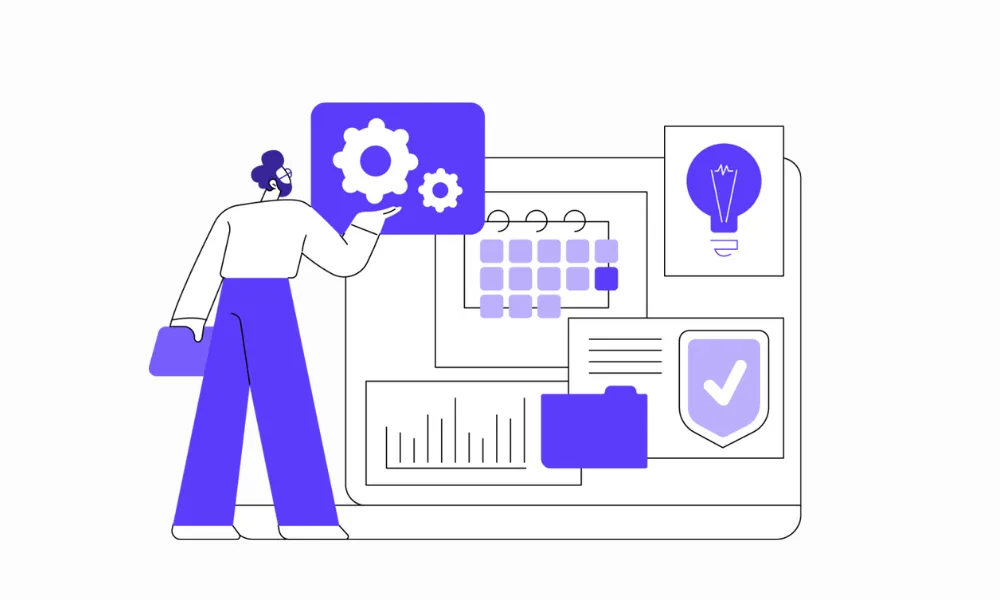
With omnichannel capabilities, businesses can automate processes that would otherwise require significant time and effort. For example, inventory management systems can be automatically updated across all channels in real-time, ensuring that product availability is accurate and consistent. Order fulfillment can be streamlined by automating tasks such as order tracking, shipping notifications, and returns processing. Additionally, customer communications, such as follow-up emails, order confirmations, and support inquiries, can be triggered automatically based on customer actions, reducing the workload for support teams.
By automating these essential tasks, businesses can operate more efficiently and effectively. This not only frees up valuable time for employees to focus on more strategic activities but also ensures that processes run smoothly, enhancing the overall customer experience.
Centralized Data Systems
A crucial component of streamlined operations is the use of centralized data systems, which are a hallmark of omnichannel capabilities. In a fragmented system, data from different channels is often stored in separate systems, making it difficult to track customer interactions, manage orders, or process returns efficiently. This lack of integration can lead to delays, miscommunication, and errors in fulfilling customer orders, which ultimately impacts the business’s bottom line.
Omnichannel capabilities solve this problem by consolidating data from all sales, marketing, and customer service channels into a single, unified platform. This centralized system allows businesses to manage orders, shipping, inventory, and returns more efficiently, as all data is available in one place. For example, when a customer places an order online and requests an in-store pickup, the centralized data system ensures that the store’s inventory is updated immediately, and the fulfillment process is streamlined across both channels.
By simplifying internal processes and improving data accessibility, businesses can reduce the time and effort required to manage their operations. This not only enhances efficiency but also ensures that customers receive faster, more reliable service. A centralized data system also provides a clearer view of the overall business performance, enabling teams to identify trends, optimize processes, and make more informed decisions.
Cost Reduction
Streamlining operations through omnichannel capabilities also results in significant cost reductions. By integrating processes across all channels, businesses can reduce operational costs in areas such as labor, shipping, and inventory management. For example, with improved workflow automation and centralized data systems, businesses can reduce the number of staff required to manually track orders, update inventory, or manage customer communications. This not only reduces labor costs but also minimizes the risk of human error, which can lead to costly mistakes.

Moreover, omnichannel capabilities optimize inventory management by ensuring that stock levels are accurately tracked and updated in real-time across all channels. This reduces the risk of overstocking or understocking, which can lead to unnecessary costs. By having a clear view of inventory levels across all locations, businesses can also optimize shipping processes, ensuring that products are shipped from the nearest location to the customer, reducing shipping costs and delivery times.
Additionally, omnichannel capabilities help businesses reduce marketing costs by allowing them to run integrated, cross-channel campaigns that are more targeted and efficient. By leveraging data from all customer interactions, businesses can focus their marketing efforts on high-value customers, reducing the cost of customer acquisition while increasing the return on investment for marketing campaigns.
Faster Decision Making
Finally, one of the most important benefits of omnichannel capabilities is the ability to make faster, more informed decisions. In today’s fast-paced market, businesses need to be agile and responsive to changes in customer behavior, market trends, and competitive pressures. Omnichannel capabilities provide access to real-time data from all channels, allowing businesses to quickly identify issues, opportunities, and trends.
With real-time data at their fingertips, business leaders can make informed decisions about inventory management, marketing campaigns, pricing strategies, and customer service improvements. For instance, if a particular product is selling faster in one region than in others, omnichannel capabilities enable businesses to adjust their inventory and marketing strategies in real-time to meet demand. Similarly, if customers are abandoning their shopping carts at a higher rate, omnichannel systems can provide insights into the reasons behind this behavior, allowing businesses to make the necessary adjustments to improve conversions.
The ability to make data-driven decisions quickly not only improves responsiveness and adaptability but also helps businesses stay ahead of the competition. In an increasingly dynamic market, being able to act quickly on insights is a key advantage that can lead to better outcomes for both the business and its customers.
How to utilize Omnichannel Capabilities
Focus on the Customer Journey
Mapping the Customer Journey
One of the first steps in implementing omnichannel capabilities is mapping out the entire customer journey. This process involves identifying all the potential touchpoints a customer may interact with, from the initial point of awareness through to post-purchase support. By visualizing these touchpoints, businesses can gain a clearer understanding of how customers move between different channels and where potential friction points may arise.
Mapping the customer journey requires businesses to consider both online and offline interactions, such as browsing a website, engaging with social media, visiting a physical store, or contacting customer support. Each of these touchpoints represents a key moment in the customer’s experience and must be integrated into the overall omnichannel strategy. By understanding how customers transition between these touchpoints, businesses can create a more cohesive and intuitive journey.
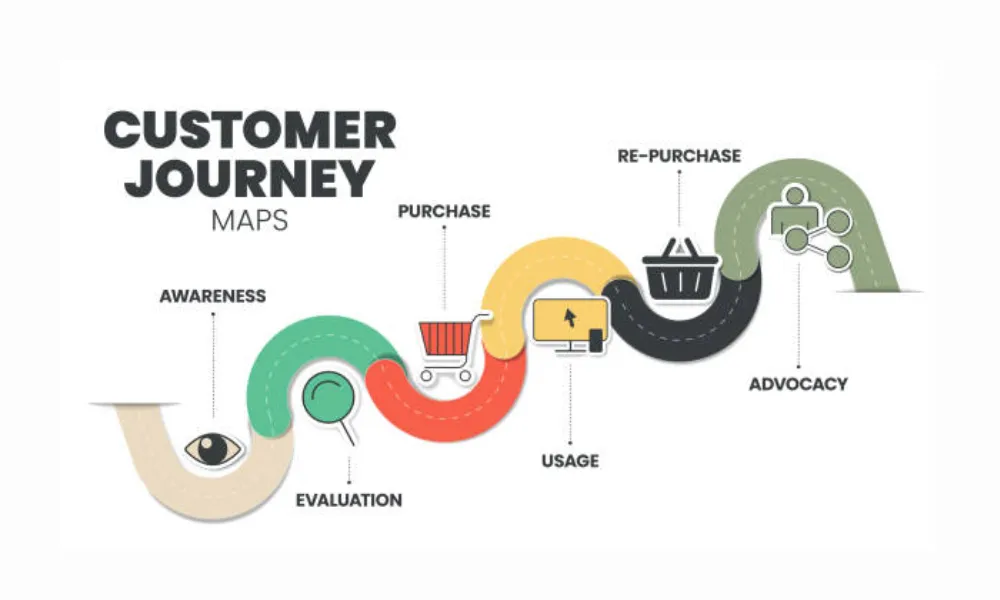
For example, a customer might start by researching a product online, visit a physical store to see it in person, and then complete the purchase through a mobile app. Throughout this process, they expect a consistent experience, with all platforms providing the same information and functionality. Mapping out these interactions helps businesses identify where they need to integrate systems, share data, and ensure that each touchpoint works seamlessly with the others.
By mapping the customer journey, businesses can also identify areas for improvement. This could involve streamlining the checkout process across channels, ensuring that inventory levels are updated in real-time, or simplifying returns and exchanges. Understanding the customer journey is essential for creating an omnichannel experience that feels natural and connected, rather than fragmented and disjointed.
Personalization Through Data
Personalization is a key element of successful omnichannel capabilities, and businesses can achieve this by leveraging data to create tailored experiences for each customer. Modern consumers expect personalized interactions, from product recommendations to targeted marketing messages, and omnichannel capabilities provide the tools necessary to meet these expectations.
Data plays a critical role in personalization. By collecting and analyzing customer data across all touchpoints—whether it’s online browsing behavior, past purchases, or interactions with customer support—businesses can build detailed customer profiles. These profiles can then be used to create personalized experiences at every stage of the customer journey.
For example, a customer who frequently shops for certain types of products can receive personalized recommendations based on their preferences, both in-store and online. Omnichannel capabilities enable businesses to deliver these recommendations through various channels, such as personalized emails, targeted social media ads, or in-store promotions. Additionally, businesses can use real-time data to engage customers at the right moment, offering discounts or special offers when they’re most likely to make a purchase.
The ability to personalize interactions across multiple channels not only improves the customer experience but also increases engagement and conversion rates. Customers are more likely to respond positively to brands that understand their preferences and deliver relevant content and offers. By using data to personalize the customer journey, businesses can strengthen customer relationships and foster long-term loyalty.
Cross-Channel Consistency
A key principle of omnichannel capabilities is ensuring consistency across all channels. In today’s digital landscape, customers interact with brands through a variety of platforms, including websites, mobile apps, social media, and physical stores. For an omnichannel strategy to be successful, each of these platforms must deliver a consistent message, experience, and level of service.
Cross-channel consistency involves aligning everything from branding and messaging to product availability and pricing. For example, a promotion that a customer sees on social media should be reflected in the company’s online store, mobile app, and physical locations. Similarly, if a customer starts a shopping experience on one platform, they should be able to pick up where they left off on another, with their preferences and cart information intact.
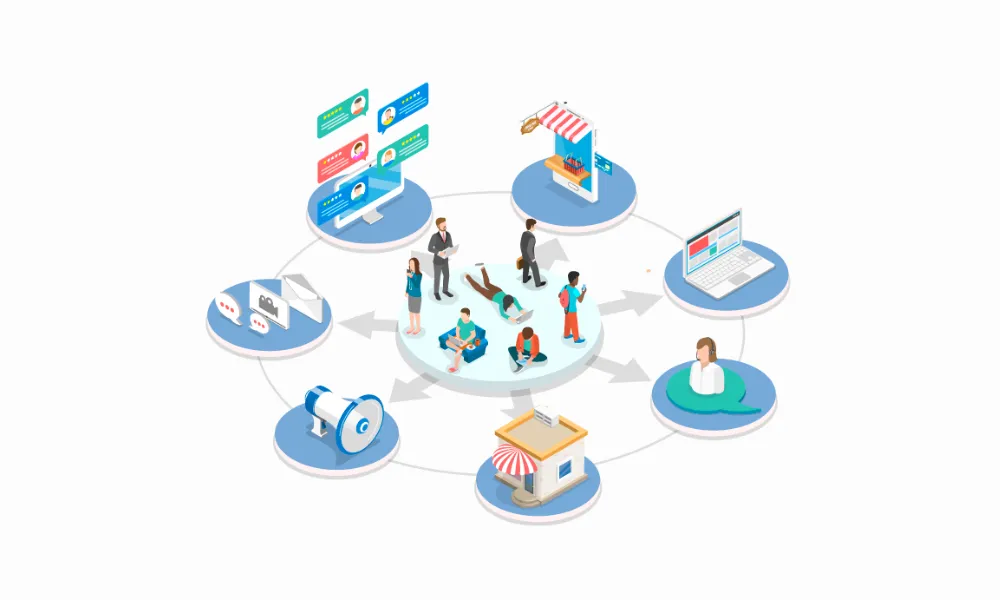
Inconsistent experiences across channels can lead to customer frustration and disengagement. If a customer encounters conflicting information, such as different prices or product availability between the website and the physical store, they may lose trust in the brand. Maintaining consistency ensures that customers can move between platforms without encountering these kinds of issues, resulting in a smoother and more enjoyable experience.
To achieve cross-channel consistency, businesses need to ensure that their internal systems are fully integrated. This includes syncing inventory management, CRM systems, and marketing platforms so that data flows seamlessly between them. Businesses must also ensure that all teams—whether they are responsible for in-store operations, online sales, or social media—are aligned in their messaging and strategies.
Leveraging Technology and Tools
CRM Systems
CRM systems play a central role in the successful implementation of omnichannel capabilities. A CRM system serves as the backbone for managing customer interactions across all channels—whether it’s through online platforms, physical stores, mobile apps, or customer support. The primary goal of a CRM system is to create a unified view of each customer, consolidating data from multiple sources into a single platform. This integration allows businesses to deliver personalized, consistent, and relevant experiences at every touchpoint.
One of the most significant advantages of using CRM systems within omnichannel capabilities is the ability to track customer journeys comprehensively. A CRM can capture every interaction a customer has with a brand, from initial inquiries to purchase histories and support requests. This data is then accessible to all departments, ensuring that marketing, sales, and support teams are aligned and working from the same customer information. For example, a sales representative in a physical store can access a customer’s online browsing history and make personalized product recommendations based on their preferences and previous purchases.
Additionally, CRM systems can help automate communication across channels, providing timely and relevant messages to customers. Businesses can use the data within their CRM to segment their audience and send targeted offers, discounts, or product recommendations via email, SMS, or push notifications. This personalization is key to improving engagement and driving conversions, as customers are more likely to respond to offers that are tailored to their specific needs and behaviors.
For omnichannel capabilities to succeed, it’s crucial to have a CRM system that can integrate seamlessly with other tools and platforms, including eCommerce, marketing automation, and customer service software. This integration ensures that data flows freely between systems, creating a seamless customer experience across all channels.
AI and Machine Learning
AI and Machine Learning (ML) are transforming the way businesses implement omnichannel capabilities by enhancing personalization and enabling more accurate predictions of customer needs. These advanced technologies can analyze vast amounts of data from multiple sources, helping businesses understand customer behavior patterns, anticipate future needs, and deliver personalized experiences in real time.
One of the key benefits of using AI in omnichannel capabilities is its ability to automate and scale personalization efforts. AI-powered algorithms can analyze customer data to make product recommendations, offer dynamic pricing, or personalize marketing messages based on a customer’s previous interactions with the brand. For example, if a customer frequently browses a particular category of products, AI can suggest similar or complementary items that align with their interests, whether they are shopping online, in a mobile app, or in-store. This level of personalization is nearly impossible to achieve manually, but AI makes it scalable across all channels.

Machine learning, a subset of AI, allows businesses to continuously improve their omnichannel capabilities by learning from customer interactions. ML models can identify trends and patterns in customer data that may not be immediately apparent, enabling businesses to fine-tune their marketing strategies, optimize product offerings, and improve overall customer engagement. For instance, machine learning can be used to analyze past customer behavior and predict future buying patterns, allowing businesses to send personalized offers at the right moment, increasing the likelihood of conversion.
Moreover, AI can enhance customer support in omnichannel systems through the use of chatbots and virtual assistants. These AI-powered tools can handle basic customer inquiries, provide product recommendations, and assist with order tracking, freeing up human agents to focus on more complex tasks. By integrating AI-driven support tools across all channels, businesses can provide consistent and efficient service regardless of where the customer engages.
Cloud Solutions
Cloud solutions are essential for implementing omnichannel capabilities, particularly in terms of data integration and scalability. Cloud-based platforms allow businesses to store, manage, and analyze large volumes of customer data across multiple channels in real time. This seamless integration of data is crucial for delivering a consistent and unified experience, as it ensures that customer information is always up-to-date and accessible across the entire organization.
One of the primary advantages of using cloud solutions for omnichannel capabilities is the ability to centralize data from all touchpoints—whether from websites, physical stores, mobile apps, or social media—into a single system. This centralization eliminates data silos, allowing businesses to have a comprehensive view of each customer and their interactions across channels. With real-time data synchronization, businesses can ensure that inventory levels, order statuses, and customer preferences are always accurate, regardless of where the customer is shopping.
Cloud-based platforms also offer the flexibility and scalability needed to grow with the business. As businesses expand, whether by adding new sales channels, increasing their customer base, or launching new products, cloud solutions can easily scale to accommodate the increased demand. This scalability ensures that omnichannel capabilities remain efficient and effective, even as the complexity of the business grows.
Furthermore, cloud solutions enable businesses to respond quickly to changing market conditions and customer needs. With access to real-time data across all channels, businesses can make faster, data-driven decisions, such as adjusting marketing campaigns, updating product offerings, or reallocating inventory. This agility is essential for staying competitive in today’s fast-paced market.
In addition to data integration and scalability, cloud solutions also improve collaboration between departments. Teams across marketing, sales, and customer service can access the same real-time data and tools, ensuring that everyone is working together to provide a seamless omnichannel experience. By using cloud-based platforms, businesses can break down internal silos and ensure that all departments are aligned in their efforts to serve the customer.
Seamless Integration of Channels
Online and Offline Synergy
One of the foundational components of omnichannel capabilities is creating synergy between online and offline channels. Modern consumers frequently shift between these two environments during their shopping journey—researching products online, visiting physical stores to see items in person, and then completing purchases either online or offline. To provide a cohesive and engaging experience, businesses must ensure that their online campaigns are aligned with in-store promotions and that all touchpoints work in harmony.
Creating online and offline synergy involves more than just running consistent promotions across channels. It requires integrating the customer experience so that transitions between online and offline shopping are seamless. For instance, if a business launches an online campaign that promotes a limited-time discount, the same offer should be available in-store, and customers should be able to redeem it regardless of the channel they choose. This alignment builds trust and ensures that customers do not feel confused or misled by discrepancies between online and offline experiences.
Additionally, businesses can enhance online and offline synergy by using tools like geolocation-based mobile marketing or in-store digital kiosks. For example, businesses can send personalized notifications to customers’ smartphones when they are near a physical store, offering exclusive promotions or incentives to visit. In-store, digital kiosks can allow customers to browse products that may not be available on the shelves, creating a bridge between the online catalog and the in-store experience.
By aligning online and offline strategies, businesses create a consistent, connected experience that encourages customers to engage across multiple touchpoints. This not only enhances the customer journey but also strengthens brand loyalty by providing a seamless and unified shopping experience.
Inventory and Fulfillment Integration
One of the most significant challenges in implementing omnichannel capabilities is managing inventory and fulfillment across multiple channels. As customers expect real-time access to product availability and flexible delivery options, businesses must ensure that their inventory management systems are fully integrated, providing accurate data across all platforms. Real-time inventory updates and efficient order fulfillment are essential for maintaining customer satisfaction and meeting the high expectations of omnichannel shoppers.
Omnichannel capabilities enable businesses to sync their inventory systems across online stores, physical locations, and warehouses, ensuring that stock levels are accurate and up-to-date. This real-time visibility allows customers to check product availability before making a purchase, whether they are shopping online or visiting a physical store. For example, if a customer is browsing an eCommerce website and sees that a product is available for in-store pickup, the inventory system should reflect this information accurately and ensure that the product is reserved once the purchase is made.
In addition to real-time inventory management, businesses must also integrate their fulfillment processes to support omnichannel strategies such as buy online, pick up in-store (BOPIS), ship-from-store, and curbside pickup. These flexible fulfillment options have become increasingly popular among consumers, as they offer convenience and speed. To provide these services effectively, businesses must ensure that their fulfillment centers and stores are connected, allowing for efficient order processing and timely delivery.
For instance, if a customer places an order online for in-store pickup, the system should notify the store to prepare the item for collection, ensuring that the order is fulfilled promptly. Similarly, if a customer chooses to have their order shipped from a local store instead of a distribution center, the inventory system must coordinate the shipment efficiently, optimizing stock levels and reducing delivery times.
By integrating inventory and fulfillment systems, businesses can improve operational efficiency, reduce the risk of stockouts or overstocking, and ensure that customers receive a seamless shopping experience across all channels.
Omnichannel Payment Systems
Another key element of seamless omnichannel capabilities is the integration of secure and diverse payment systems across all channels. Customers today expect flexibility not only in how they shop but also in how they pay for their purchases. To meet these expectations, businesses must offer a variety of payment options that are available consistently across online, in-store, and mobile platforms.
Omnichannel payment systems enable businesses to accept payments through multiple methods, such as credit and debit cards, digital wallets (Apple Pay, Google Pay), buy now, pay later services (BNPL), and even cryptocurrency. Offering a range of payment options gives customers the flexibility to choose the method that best suits their preferences, making the shopping experience more convenient and increasing the likelihood of completed transactions.
A critical aspect of integrating omnichannel payment systems is ensuring that payment information is securely shared across platforms. For example, a customer who begins their shopping experience on a mobile app and completes the transaction in-store should not have to re-enter their payment details. Instead, the system should securely store and transfer this information across channels, allowing for a smooth checkout process.
Moreover, businesses must prioritize security when implementing omnichannel payment systems. With the rise of cyber threats, ensuring that customer payment data is encrypted and protected across all channels is crucial for maintaining customer trust. Implementing security measures such as tokenization and two-factor authentication can help safeguard payment information and ensure that customers feel confident using multiple platforms to make purchases.
In addition to secure payment options, omnichannel payment systems can also offer features such as loyalty program integration and seamless returns. For instance, a customer who earns loyalty points through an in-store purchase should be able to redeem those points online without any issues. Similarly, if a customer makes a purchase online and wishes to return the item in-store, the payment system should facilitate a smooth refund process across both channels.
By integrating omnichannel payment systems, businesses can offer customers a frictionless checkout experience, whether they are shopping online, in-store, or via mobile. This enhances convenience and encourages repeat business, as customers appreciate the flexibility and security that omnichannel payment options provide.
Continuous Optimization
Data-Driven Decisions
One of the most effective ways to optimize omnichannel capabilities is through data-driven decision-making. The wealth of data collected from customer interactions across various channels provides businesses with valuable insights into behavior patterns, preferences, and purchasing habits. By regularly analyzing this data, businesses can identify areas for improvement, optimize their strategies, and make more informed decisions.
Omnichannel capabilities offer businesses access to customer data from multiple touchpoints, including eCommerce platforms, physical stores, mobile apps, and social media interactions. By integrating this data into a centralized system, businesses can gain a holistic view of the customer journey, allowing them to spot trends, predict future behaviors, and tailor their offerings to better meet customer needs. For example, analyzing data may reveal that customers prefer to start their journey online but complete their purchase in-store. Understanding this trend can help businesses improve both their online and in-store experiences to facilitate smoother transitions between channels.

Data-driven decisions can also help businesses personalize their marketing efforts. With access to real-time data, businesses can create targeted marketing campaigns based on customer preferences and behaviors. For instance, if a customer frequently browses certain categories of products, data analysis can help marketers tailor product recommendations or offer discounts to encourage a purchase. By leveraging data in this way, businesses can refine their omnichannel strategies to provide more personalized experiences that drive engagement and conversions.
In addition to customer insights, data-driven decisions can improve internal operations. For example, analyzing sales data from different channels can help businesses optimize inventory levels, ensuring that stock is allocated appropriately across online and physical stores. By continually analyzing data, businesses can make more strategic decisions that align with both customer expectations and business goals.
Feedback Loops
In addition to relying on data, businesses must also create feedback loops to ensure they are continuously improving their omnichannel capabilities. Customer feedback is an invaluable tool for understanding what works well and where there is room for improvement in both online and offline experiences. By actively soliciting and analyzing feedback, businesses can gain insights that help them refine their strategies and better meet customer needs.
Feedback can be gathered in several ways, including customer surveys, reviews, social media comments, and in-store interactions. By creating a system for collecting and processing this feedback, businesses can identify recurring issues or trends and take proactive steps to address them. For example, if multiple customers report that a website’s checkout process is difficult to navigate, businesses can prioritize redesigning the user interface to make it more intuitive and streamlined. Similarly, feedback about long wait times in physical stores could prompt changes to in-store staffing or the implementation of faster checkout technologies.
The key to creating effective feedback loops is not only gathering feedback but also acting on it. Customers are more likely to remain loyal to a brand if they see that their concerns and suggestions are being addressed. For example, businesses can follow up with customers to inform them that improvements have been made based on their feedback, reinforcing the idea that the business is listening and responsive to their needs.
In addition to customer feedback, internal feedback from employees can be just as valuable in optimizing omnichannel capabilities. Employees who work in customer-facing roles, whether online or in-store, are often the first to notice issues or inefficiencies. Creating an internal feedback system can help businesses identify problems early and implement solutions before they affect the customer experience.
Performance Metrics
Establishing clear performance metrics, or key performance indicators (KPIs), is another crucial aspect of continual optimization. By setting measurable goals, businesses can track the success of their omnichannel initiatives and make data-informed adjustments as needed. Performance metrics provide businesses with a way to measure the impact of their strategies and ensure they are achieving desired outcomes, such as increased customer engagement, higher conversion rates, or improved operational efficiency.
There are several KPIs that businesses can track to measure the effectiveness of their omnichannel capabilities. Some common metrics include:
- Customer Retention Rate: This measures how well a business retains customers over time. A high retention rate indicates that customers are satisfied with their experiences across channels and are more likely to return for repeat purchases.
- Conversion Rate: This metric tracks the percentage of customers who complete a purchase after engaging with a brand. Businesses can analyze conversion rates across different channels (e.g., website, mobile app, in-store) to identify which touchpoints are performing well and where improvements may be needed.
- Average Order Value (AOV): This KPI measures the average amount customers spend per transaction. Businesses can track AOV across channels to identify opportunities for cross-selling or upselling, which can increase revenue.
- Customer Lifetime Value (CLV): CLV tracks the total revenue a business can expect from a customer over the entire duration of their relationship. By understanding CLV, businesses can assess the long-term impact of their omnichannel strategies on customer loyalty and profitability.
- Net Promoter Score (NPS): NPS measures customer satisfaction and loyalty by asking customers how likely they are to recommend a business to others. A high NPS indicates that customers are satisfied with their omnichannel experience and are likely to promote the brand.
- Fulfillment Metrics: Metrics such as order accuracy, shipping times, and return rates are critical for measuring the efficiency of an omnichannel system’s fulfillment process. By tracking these metrics, businesses can identify bottlenecks and optimize their inventory and delivery systems.
By regularly reviewing these and other performance metrics, businesses can identify areas of strength and weakness in their omnichannel capabilities. This data-driven approach allows businesses to make informed decisions about where to allocate resources, which processes to improve, and how to better meet customer expectations.
Conclusion
As the digital landscape continues to advance, the importance of omnichannel capabilities will only increase. Customers now expect seamless, personalized experiences, and businesses that fail to meet these expectations risk falling behind their competitors. The future of omnichannel is poised to be driven by technological innovations like AI, AR, VR, and voice commerce, which will further enhance how businesses interact with their customers across all channels. By staying ahead of these trends and integrating sustainability into their strategies, businesses can not only improve their operational efficiency but also build deeper, long-lasting relationships with their customers. Embracing omnichannel capabilities is no longer an option—it’s a necessity for businesses looking to succeed in an increasingly competitive market.











